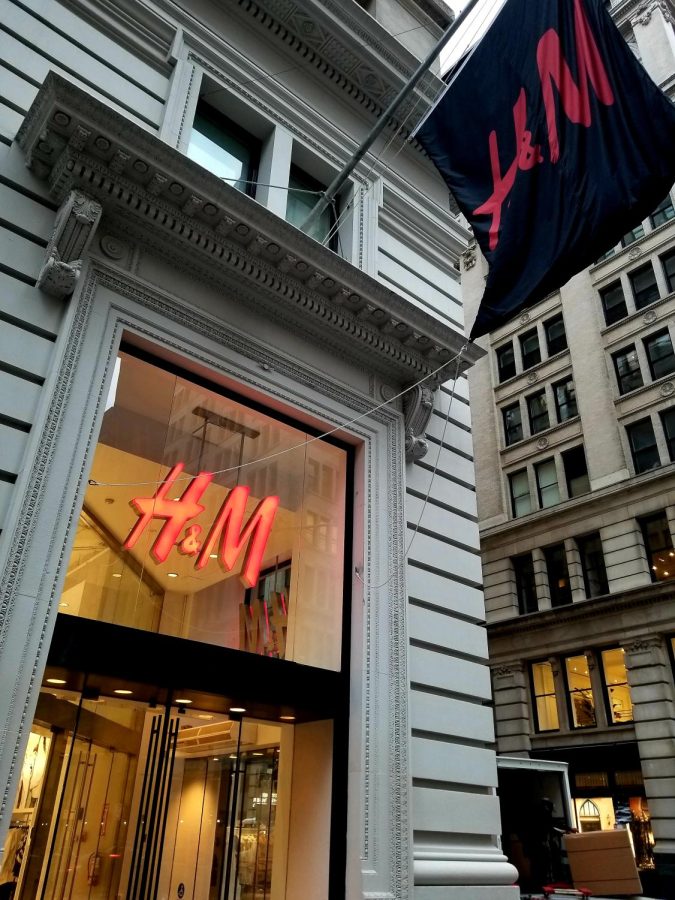Retailers end free returns ahead of winter holiday shopping season
October 28, 2022
As the holidays approach, so is another busy shopping season. Retail companies will charge customers who want to return items, rather than offer free returns.
The move comes as delivery service companies — such as the U.S. Postal Service, FedEx Corp. and the United Parcel Service Inc. — raise their shipping rates, some with price hikes already in effect.
The USPS started its seasonal price hike Oct. 2 and it is slated to end it on Jan. 22, 2023. While far from the start of the holiday season, this may contribute to financial pressures on families as inflation remains at a 40-year high.
Due to the increased costs of shipping-related expenses such as fuel, retailers expect millions of dollars worth of returns. The National Retail Federation predicted in 2021 that shoppers would return over $761 billion in merchandise, with $218 billion attributed to online purchases.
Free returns became a fixed standard in e-commerce over the years.
The ease in merchandise returns led to “bracketing.” Customers who bracket their orders buy multiple sizes and colors of an item, with the intention of returning a majority of the items purchased.
Customers do this to work around the issue of inconsistency with clothing sizes. They may try on items they are interested in but return what they do not like.
Retailers such as Abercrombie & Fitch, H&M, JCPenney and Zara announced they will charge customers for returns earlier this year.
“The bedroom is now our dressing room, or the living room is now our dressing room for products we buy, clothing especially,” Tony Sciarrotta, the executive director of The Reverse Logistics Association, told RetailDive. “Zara recognizes that the costs have gotten enormous. If you’re shipping three garments for a person, and they’re only expecting to buy one, that’s a 66% return rate. So that’s the nightmare of the apparel industry. And I applaud them. Somebody had to do this.”
In the United Kingdom, Zara announced it will charge customers £1.95, which is roughly $2.45, to return items purchased online to third-party drop off points. In-person returns at stores, however, are still free of charge.
The move drew customers into physical locations. As a result, waiting time in lines increased, as customers reportedly waited on line for over 45 minutes. Customers went on social media to voice their complaints, some even vowing to never shop at the retailer again.
The shipping hike also discourages hesitant customers from making purchases. Having the option to return allowed customers to ensure the product they purchased was suitable for them and not unsatisfactory.
Retail returns in the United States jumped from $428 billion in 2020 to $761 billion in 2021, according to reverse logistics company Optoro. The highest retail sales tend to occur during the winter holiday season. With such high sales, high returns are a given.
Retailers raised costs in response to an increased rate of returns during the COVID-19 pandemic, when online shopping drastically increased.
“You have to think about not just the cost of shipping,” Erin Halka, senior director of solution strategy and commerce at supply-chain management firm Blue Yonder, told Business Insider.
“It’s the cost of labor, it’s the cost of maybe cleaning that item, repairing it potentially too, repackaging it to make it look better so that the next customer that’s receiving it does not realize it’s already been in the hands of another customer.”
Rising shipping costs can also be attributed to this, as shipping companies, who are reliant upon fuel and labor, charge customers additional fees to ship items.
The USPS said in a press release that its rate hikes are necessary to “keep USPS competitive while providing the agency with the revenue to cover extra costs in anticipation of peak-season volume.”
These extra fees are dependent upon the weight and distance of the package.
For instance, a customer may wish to ship a Priority Mail package weighing more than 26 pounds. This customer will be confronted with an additional fee of $6.45 to send their package across the country.
The primary reason behind high returns occurring during the winter holiday season is the element of secrecy and surprise behind giving gifts to friends and relatives. Although thoughtful, this can result in returns when one misinterprets the preferences of the other party.
There are ways for consumers to dodge these extra fees and save money. Consumers may check if the retailer offers free in-store returns or if it does free shipping on exchanging items rather than returning.
For consumers who are not near a physical location, some retailers offer alternative methods, such as dropping off returns at a Walgreens location or scanning a QR code and dropping off at a USPS location.
For Baruch College students, one way to maneuver around these extra fees is by purchasing these items with the intended recipient. Rather than this action being perceived as stingy or miserly, the practicality of such an action should be commended. Not only will this help save money and time, it will also ensure the recipient truly loves the gift.







